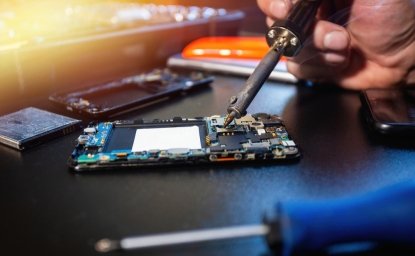Efforts are underway in the U.S. to shift the 5G network ecosystem from a limited number of proprietary, vertically integrated suppliers towards a more disaggregated and diverse set of 5G vendors. As that conversation evolves, a nascent conversation is emerging over the role that open source hardware (OSH) can or should play in that ecosystem. What are the potential benefits of integrating OSH into 5G networks? What are the limitations? And what role, if any, should stakeholders (including the U.S. government, private sector, and professional associations) play in encouraging the adoption of OSH in 5G networks?
As part of two initiatives, 5G Beyond Borders and THING Tank, the Wilson Center’s Science and Technology Innovation Program (STIP) convened a group of open source hardware and 5G experts from three organizations - one open source hardware association and two 5G industry leaders - to explain and contextualize this emerging debate. Their written, short-form answers to the four interview questions can be found below. Taken together, they begin to capture the contours of this emerging debate.
NOTE: While open source and Open RAN both use the word “open,” they refer to two different types of ‘openness’ in the context of 5G networks and cannot be used interchangeably. Open RAN focuses on creating standardized and interoperable interfaces (frequently referred to as open interfaces) between systems in the radio access network (RAN) in order to enable a more disaggregated and diverse set of vendors. In contrast, open source denotes when the design (or source) of the hardware or software in question is publicly available for use and subsequent iteration.
For the purposes of this discussion, we are using the following OSHWA definition of open source hardware:
“hardware whose design is made publicly available so that anyone can study, modify, distribute, make, and sell the design or hardware based on that design. The hardware’s source, the design from which it is made, is available in the preferred format for making modifications to it. Ideally, open source hardware uses readily-available components and materials, standard processes, open infrastructure, unrestricted content, and open-source design tools to maximize the ability of individuals to make and use hardware.”
The Experts
- Ericsson: Telefonaktiebolaget LM Ericsson (commonly known as Ericsson) is a Swedish multinational networking and telecommunications company founded in 1876 and headquartered in Stockholm, Sweden. It has more than 101,000 employees in approximately 180 countries. As a leading provider of Information and Communication Technology (ICT), Ericsson offers comprehensive portfolios for 5G, Internet of Things (IoT), and automation technology.
- OSHWA: The Open Source Hardware Association (OSHWA) aims to foster technological knowledge and encourage research that is accessible, collaborative and respects user freedom. OSHWA’s primary activities include hosting the annual Open Hardware Summit and maintaining the Open Source Hardware certification, which allows the community to quickly identify and represent hardware that complies with the community definition of open source hardware.
- Qualcomm: Qualcomm is an American multinational company founded in 1985 and headquartered in San Diego, California. The company has 41,000 employees spread across 40 different countries and is best known for designing and manufacturing wireless telecommunications products. Qualcomm’s foundational technologies underpin the mobile ecosystem and are found in every 3G, 4G, and 5G smartphone. Today, Qualcomm is bringing the benefits of mobile to new industries, including automotive, the internet of things, and computing, and is leading the way to a world where everything and everyone can communicate and interact seamlessly.
The Conversation
What are the potential benefits of integrating open source hardware (OSH) into 5G networks?
Ericsson: Similar to open source software, open source hardware has the potential to lower the entry barrier for new entrants. It could also potentially allow multiple companies to share the R&D effort for essential but non-core functionality.
OSHWA: 5G will soon become a very strategic technology in many domains. As such, it is very important to ensure that it is not controlled by a few private entities, and that the barrier to entry for commercial and non-commercial players is kept as low as possible. Recent initiatives like splitting the Radio Access Network (RAN) in layers and defining a set of clear interfaces among its components (as done e.g. by the O-RAN Alliance) are a step in the right direction.
While 5G base stations and user equipment contain both software and hardware, the barrier to entry problem can be especially acute in the hardware realm, where some chip vendors will only sell to very big customers and will require the signature of Non-Disclosure Agreements (NDAs) just to allow access to the documentation of a chip. A set of open-source hardware and software reference implementations of the different blocks involved in a complete 5G solution, only using easily available components, will solve any vendor lock-in issue, reduce friction to innovate, and improve accessibility for all actors.
Qualcomm: There are benefits to OSH in 5G networks, especially for private networks rather than large mobile network operators. Indeed, we are on the board of the RISC-V International Association (RVIA), which is a non-profit organization that develops the RISC-V Instruction Set Architecture (ISA) open standard. The ISA includes the base architecture as well as optional extensions for things like floating-point arithmetic, vector processing, and security features. The open standard allows anyone to develop or use a compliant implementation without having to pay RVIA any fees. Use of the “RISC-V” trademark requires membership, while the use of the “RISC-V Compatible” trademark involves meeting a couple of additional requirements.
What are the potential limitations of integrating open source hardware (OSH) into 5G networks?
Ericsson: OSH does not automatically lead to a high performance system (or even a working system). The major challenge for any hardware vendor today is to achieve the scale, customization, performance, reliability, high availability, security and energy efficiency which are all necessary for a 5G network. OSH does not directly address these key attributes and these are significant challenges to address for any vendor.
OSHWA: The provision of open-source components often goes hand in hand with the creation of communities around them, with the expectation that anybody in those communities can easily contribute to the overall work, and that anybody can freely use the results of that work. It is important to guarantee that these contributions happen in a legally sound context. Components that are required elements of 5G equipment should be generally available on the market without requiring purchasers to sign restrictive NDAs in order to access them. This allows everyone to access critical components without limiting their ability to discuss how they are being used.
Qualcomm: Contrary to popular belief, RVIA does not produce or provide open source hardware. Though, there are organizations that do develop and distribute open-source RISC-V hardware, including the OpenHW Group and CHIPS Alliance. For companies like Qualcomm who have our own in-house expertise in developing Central Processing Unit (CPU) cores, the open-source implementations are not of much interest to us.
What role, if any, should the U.S. government, private sector, and/or professional associations play in encouraging the adoption of open source hardware (OSH) in 5G networks?
Ericsson: Ericsson believes that rather than mandating a particular network architecture, specific implementation or technology, the policy of the U.S. Government generally should be to continue to promote technology-neutral and market-led approaches to innovation. The U.S. has clearly demonstrated that open and intense competition and market incentives, not government mandates, are the most effective way to mobilize the telecommunications industry to unlock innovation and create value. The U.S. led the world in 4G and the “app economy” not by insisting on any particular network standard, but by creating an open, predictable, and attractive investment climate for all industry stakeholders and allowing operators to select the best technology based on their needs. Therefore the U.S. Government should focus first and foremost on promoting 5G deployment, not on promoting particular types of 5G networks.
OSHWA: The U.S. Government can help in this process by sponsoring the development of a fully open-source (hardware and software) 5G reference solution, subcontracting work to specialized private companies and individuals, and encouraging commercial vendors to participate. Moreover, it is important that the reference designs follow the current trend of using as few exotic components as possible, pushing complexity to commodity computing platforms everybody has access to, and implementing the custom digital part of the hardware using generic components such as Field-Programmable Gate Arrays (FPGAs). This will ensure complete accessibility for all components and actors. Making spectrum available and easily accessible for experimenters is another area in which the government can help provide a level playing field. The government can provide legal counsel and involve professional associations, such as OSHWA, in public/private partnerships.
Another key domain is communication and clarity. An open interface is not the same thing as an open-source implementation. It is important to clearly establish the difference, and explain the benefits brought about by open source. The word “open” is sometimes used to describe endeavours which have little to do with open source, deliberately making no effort to clarify its actual meaning in a given context, a practice referred to as “open washing”. An efficient communication campaign can help avoid any misunderstanding in this regard.
Qualcomm: A significant piece of any network protocol stack (like 5G) is software. Private networks based largely off of open source stack code is likely, at least starting with open source reference stack, though large mobile network operator (MNO) systems will always require the design integration skills of sophisticated vendors - the existing big infrastructure vendors, and other outstanding players in niche segments, such as Open RAN components. To that point, both the hardware and software in a 5G implementation, even just the implementation of the standardized interoperation protocol, is very complex.
The existing sophisticated vendors have spent many years and many engineers in close collaboration in building, integrating and debugging and supporting both the hardware and software for these stacks. While OSH and software has promise for reference designs and private networks, it is questionable if such a model works in a complex MNO network with significant “always available” requirements, at least without some integrator stepping up to build expertise in and provide ongoing support. That model did happen for Linux, or Android for example, but a network has many more interoperability requirements than a software operating system.
In the context of 5G networks, what is the relationship between open source hardware (OSH) and open source software (OSS)?
Ericsson: We do not see any direct connection between OSH and OSS. Open source software is possible to use on OSH as well as on purpose-built hardware and similarly, you could potentially have open source hardware not running any open source software. The two are not linked in that respect. Ericsson is a large promoter and user of OSS in its products.
OSHWA: A 5G solution is made of many components, some in user equipment (e.g. a mobile phone), some in the base station, some running in data centers. These components typically involve software and hardware. The hardware in data centers is based on commodity computing platforms, e.g. big servers often running the open source operating system GNU/Linux. Because these servers are typically provided by many different vendors, and the cost of switching from one vendor to another is relatively low, they pose no risk for vendor lock-in or other accessibility issues. The combination of standardized hardware and open-source software results in a portable platform. Ideally the software would be licensed under an open-source license approved by OSI and featuring a patent licensing clause to legally enable the OSH/OSS integrated benefits. However, as one moves to the periphery of the network (to the base station and the user equipment), hardware becomes less and less commoditized, and the most efficient way of dealing with lock-in and interoperability problems is to provide a reference open-source hardware design everybody can rely on.
Qualcomm: On the OSS topic, we are involved with the Open Archives Initiative (OAI) and the usage of the OAI stack as a “reference architecture,” into which you can mix and match proprietary and open source components to form commercial implementations. Different use cases have different needs for scalability, robustness, etc., and the likelihood for actual commercial use of open source is always higher on the top of the stack (i.e. operations and management (O&M) and the core network (CN)), and lower as you go down the layers due to the critical need for advanced hardware and software. A critical piece of such open source reference architectures is that they must be able to incorporate FRAND (fair, reasonable, and non-discriminatory) concepts, in order to maintain participation by organizations with years of investment and expertise in these areas.
Authors



Science and Technology Innovation Program
The Science and Technology Innovation Program (STIP) serves as the bridge between technologists, policymakers, industry, and global stakeholders. Read more

Explore More
Browse Insights & Analysis
About 5G Beyond Borders

THING Tank




